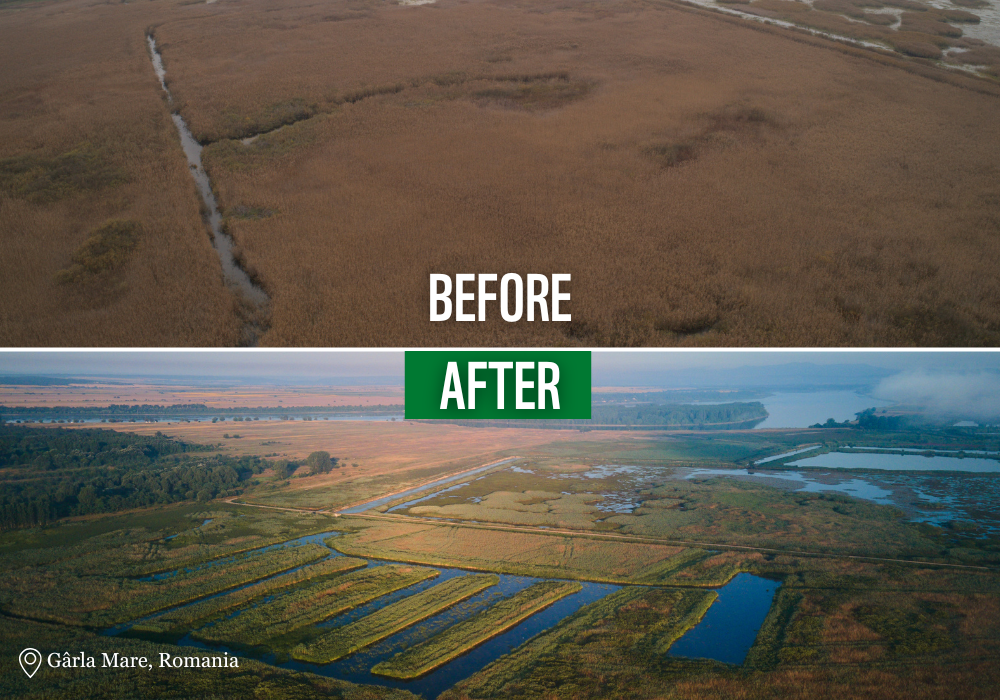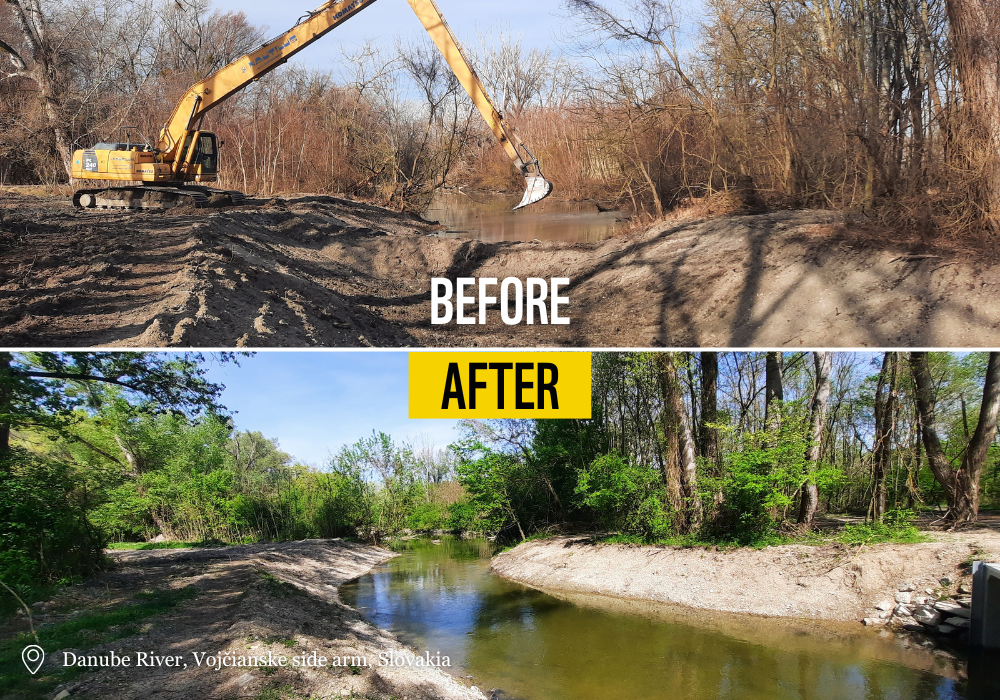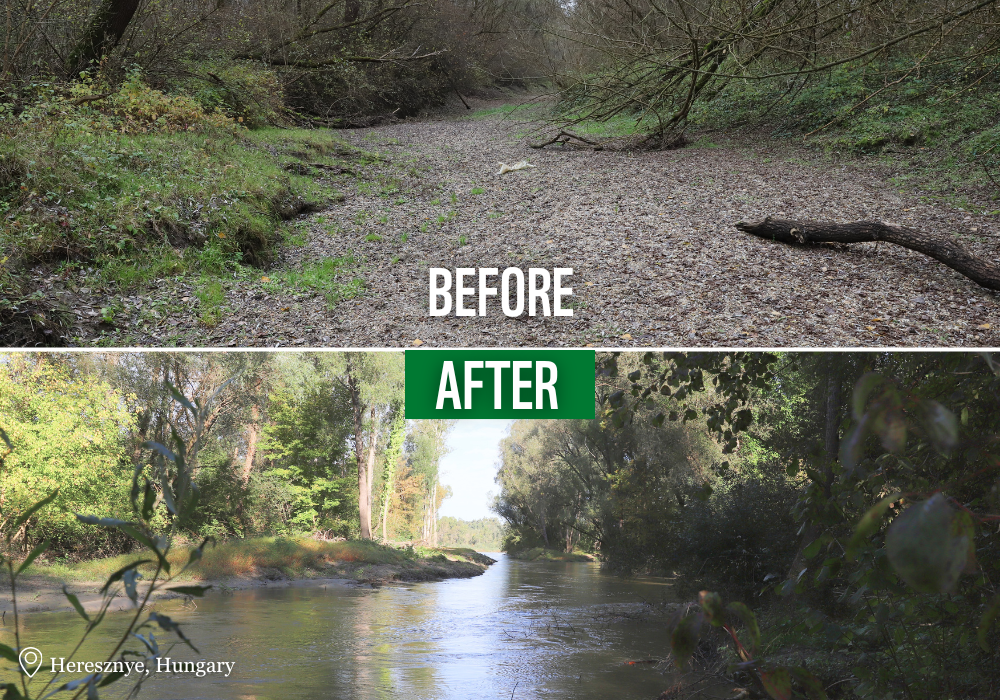How industry actors are attempting to remove EU water protections - new report
A new report lifts the lid on how little some of Europe’s most powerful industry groups care about the rules that protect people and nature from pollution.
Water is the overlooked risk in supply chains. Nature-based solutions are the cost-effective path to resilience.
.png)
Executives tend to think of supply chain resilience in terms of fuel prices, geopolitical risks, or digital security. But the next major disruption may come from something more fundamental: water. In 2024, the planet saw its sixth straight year of turbulent water cycles, with nearly 60% of rivers running either too high or too low 1. These global disruptions reach close to home in the Danube River Basin, where climate extremes, pollution, and overuse are pushing the rivers’ natural balance to the limit.
As World Rivers Day approaches, it is worth recalling the Danube’s scale and significance: Europe’s second-longest river, spanning ten countries and linking 19 in its basin, supporting more than 80 million people. It carries grain and steel, powers cities, households and industry, irrigates crops, and underpins livelihoods from Bavaria to the Black Sea. Yet this great artery of Europe is under threat and its ability to provide these critical services is growing increasingly fragile.
The European Environment Agency reports that only 37% of EU surface waters are in good or high ecological status, and just 29% achieve good chemical status2. Rivers are heavily affected by pollution, mainly from coal-powered energy generation and from agriculture. Two centuries of river regulation —straightening, dikes construction, reinforced embankments, and hydropower development — have deprived rivers of sediments, caused their degradation, which reduced their capacity to absorb shocks. Climate change is now magnifying these symptoms of disruption, turning them into hardly avoidable hazards.
When river systems lose their vitality, it is not only birds, frogs, and reeds that suffer. The economic fallout is real.
Barges sit stranded. Harvests fail. Logistics are disrupted, driving up freight costs. Droughts and floods slash harvests, wipe out crops, and rattle food markets. And as erratic weather patterns intensify, floods, forest fires, and a disrupted water cycle are destroying livelihoods, damaging infrastructure, and shaking supply chains. In short, water risks are already eroding the economy — and the crisis will only intensify unless we act now.
By working with nature, we can draw on existing solutions that help rivers regain their resilience and, in turn, support sustainable supply chains. Business investment in nature restoration is not an act of philanthropy, but a rational economic necessity. Such efforts buffer against floods and droughts, improve water quality, increase climate resilience for communities and can decrease water-related hazards to the supply chain. They are practical, cost-effective measures that benefit agriculture, industries, but also do so for people and nature.
Nature-based solutions aiming to bring back water into landscapes are not futuristic ideas; they are already delivering results worldwide, including here in the Danube basin. In Romania at Garla Mare, reconnecting low-lying riverlands with the Danube has created natural buffers that absorb rising waters and protect communities. This has also opened up new opportunities for recreational activities such as fishing, kayaking, and birdwatching.

Restored side channels breathe life back into rivers, providing cleaner water and healthier ecosystems for local communities. Examples include the Old Drava oxbow in Croatia, Liberty Island in Hungary, and projects along the Slovak stretch of the Danube.

Applying nature-based solutions in the regions that feed supply chains helps ease drought and boost soil moisture — strengthening agriculture and food production, as demonstrated by farmers in the Tisza River Basin.

For business leaders, the choice is clear: build resilience across watresheds you operate in by acting as responsible stewards or bear the costs of inaction.
For companies ready to act, the next question is how to start. WWF Water Stewardship Knowledge Hub offers a practical entry point. It helps businesses take a strategic approach to water by identifying risks in the basins where they operate, exploring relevant solutions, and learning from case studies across the Danube and beyond. The Hub is designed to support companies that want to integrate water into their supply chain strategies.
Resilient businesses need resilient rivers. By investing in river restoration, companies not only secure their own future but also contribute to the long-term prosperity of the region.
Source:
1 State of Global Water Resources 2024, World Meteorological Organisation
2 Europe’s State of Water 2024, European Environment Agency

Join the WWF sustainability community! Be the first to receive our latest business updates and make sure you are invited to our upcoming events.
Subscribe